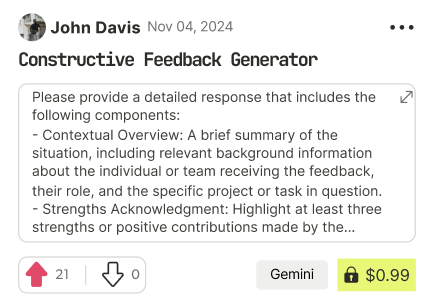prompt mine App
Find, Create & Share AI Magic
Analyzing Sylvia Plath's "Tulips"
Choose the classic poem "Tulips" by Sylvia Plath, written in 1961, to analyze its key images, literary devices, structure, and overall impact.
- Begin by identifying key images or phrases that stand out, such as:
"The tulips are too excitable, it is winter here."
"The walls, also, seem to be made of a similar substance to the tulips."
"I didn't know what to make of this, knowing very well that I would die."
Analyze how these images contribute to the poem's central themes of isolation, mortality, and the blurring of reality and fantasy. The tulips, often a symbol of life and vibrancy, are described as "too excitable" and overwhelming, highlighting the speaker's disconnection from the world.
- Pay attention to Plath's use of literary devices such as:
Alliteration: "The tulips are too excitable" (the repeated 't' sound creates a sense of urgency and turmoil).
Symbolism: Tulips represent the speaker's life force and vitality, which is slowly fading away.
Metaphor: Comparing the walls to tulips emphasizes the speaker's sense of confinement and the overwhelming presence of death.
Irony: The contrast between the vibrant tulips and the speaker's bleak reality creates a sense of irony, underscoring the cruel nature of fate.
Discuss how these literary devices enhance the tone or emotional impact of the poem. Plath's use of alliteration and symbolism creates a sense of urgency and foreboding, while the metaphors and irony emphasize the speaker's feelings of confinement and despair.
- Examine the structure of the poem and how it influences the rhythm or emphasis on certain ideas:
The poem consists of nine stanzas with varying line lengths, creating a sense of unevenness and disjointedness.
The use of enjambment and caesura adds to the sense of urgency and confusion, mirroring the speaker's state of mind.
The repetition of the phrase "I didn't know what to make of this" becomes a refrain, emphasizing the speaker's confusion and disconnection from the world.
Summarize how these elements work together to create a cohesive message or emotional experience for the reader. In "Tulips," Plath masterfully employs literary devices and structure to convey the speaker's feelings of isolation, mortality, and disconnection. The poem's central themes are woven together through the use of symbolism, metaphor, and irony, creating a sense of urgency and foreboding that draws the reader into the speaker's bleak world.

Find Powerful AI Prompts
Discover, create, and customize prompts with different models, from ChatGPT to Gemini in seconds

Simple Yet Powerful
Start with an idea and use expert prompts to bring your vision to life!
